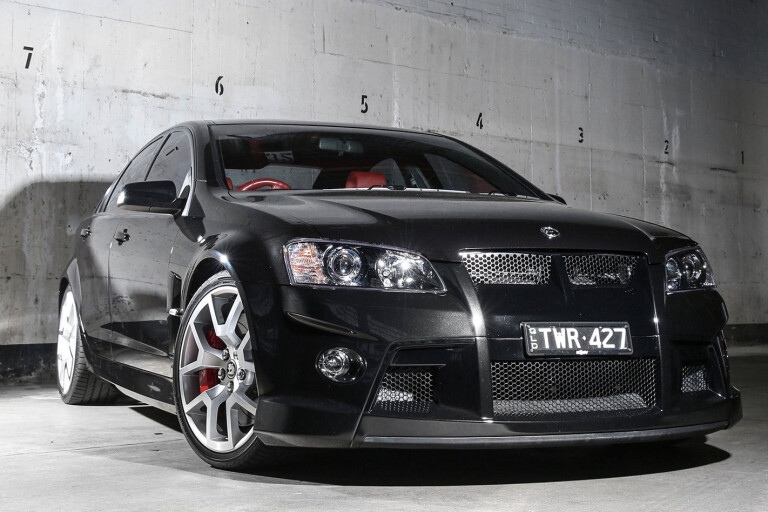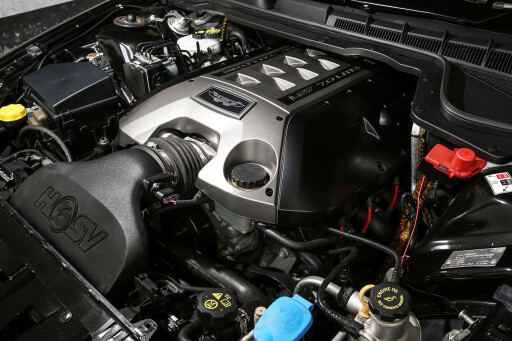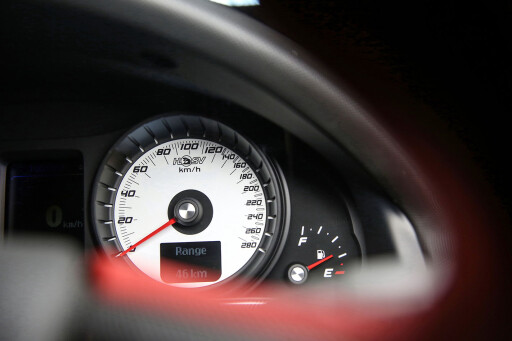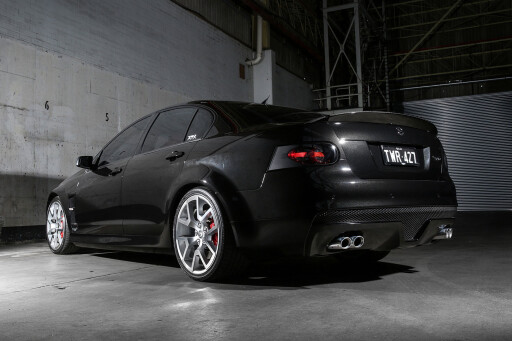
If the HSV W1 has a grand-daddy, it’s this car, the W427. No, the W427 of 2008 didn’t have a blower, but it was a genuine attempt at taking things to new heights, just as the W1 does.
And the 427 didn’t need forced induction because, as the name suggests, it had 427 cubic-inches of alloy V8 to shunt it around. A full seven litres, the LS7 engine cranked out 375kW and 640Nm.
But don’t be thinking it was a big lazy lump of a thing; power peaked at 6500rpm and the torque was jammed way up high at 5000rpm, making it a fair old monster of a thing with its 11.0:1 compression ratio.
 Transmission was the same T6060 Tremec that’s found in the W1 and, like that car, there was no automatic trans option. And that’s purely because there was – and still is – no slusher in the GM warehouse that will cop that sort of torque figure. Well, none that don’t need a truck-sized trans tunnel to physically get them into the car, anyway.
Transmission was the same T6060 Tremec that’s found in the W1 and, like that car, there was no automatic trans option. And that’s purely because there was – and still is – no slusher in the GM warehouse that will cop that sort of torque figure. Well, none that don’t need a truck-sized trans tunnel to physically get them into the car, anyway.
Archive: Tickford TE50 vs HSV Clubsport R8
Fact is, everything about the W427 was huge. The wheels and tyres are a good starting point. Measuring 20 inches, the rims were clad in a 245/35 front hoop and a 275 rear.
And you can probably guess that a 265/295 combo would have been preferable but just wouldn’t fit. And suddenly the extra wide front guards on the W1 start to make sense.
 Staying with the big theme, the official fuel economy number for the combined-cycle test was a frightening 17.2 litres per 100 (the current GTS with a supercharged 6.2 with more power and more torque uses about 15 litres for the same test). And a lot of that will be down to the kerb mass which was a man-sized 1874kg.
Staying with the big theme, the official fuel economy number for the combined-cycle test was a frightening 17.2 litres per 100 (the current GTS with a supercharged 6.2 with more power and more torque uses about 15 litres for the same test). And a lot of that will be down to the kerb mass which was a man-sized 1874kg.
For all that bigness, the W427 didn’t drive like a B-double; it was actually quite nimble and really demanded to be driven hard thanks to the way that big lump was cammed and tuned to deliver the goods way up high.
That said, we are still dealing with 427 cubes here, so even if the engine wasn’t completely revved up, it still packed a fair wallop pretty much from idle onwards. And when you did give it the berries, it was seriously impressive. The sort of supercharged grunt HSV is currently serving up is one thing, but a big-inch, high-comp atmo thrasher is another altogether.
 Those who drive a W427 remain wide-eyed for quite a while afterwards and those who actually bought the things fell in love with them.
Those who drive a W427 remain wide-eyed for quite a while afterwards and those who actually bought the things fell in love with them.
Former HSV chief engineer Brad Dunstan owned one long after he’d departed HSV and, when the time came to trade-up and renew his lease, he couldn’t think of a suitable replacement and actually went looking for a another W427.
Part of the attraction was surely that the 427 didn’t look half as lairy as some of the cars it shared showrooms with. In fact, once you got past that huge, deep air intake, the W427 was more E-Series Senator than the Holden Clubsport in terms of its relatively restrained look.
 But such adulation was not industry-wide, it seems. When the car was officially launched in August 2008, the original plan was to build 427 examples. But by the middle of the following year, the announcement was made that production would be capped at 137 (138 if you count the original motor show car).
But such adulation was not industry-wide, it seems. When the car was officially launched in August 2008, the original plan was to build 427 examples. But by the middle of the following year, the announcement was made that production would be capped at 137 (138 if you count the original motor show car).
What happened? Well, it wasn’t that the car was a dud, but at $155,000, neither was it exactly a bargain. You could also factor in that this is the point in history when financial markets decided to melt-down one more time, creating the GFC and turning last week’s millionaires into next week’s Centrelink customers. Either way, you can see why HSV has capped W1 production at closer to 300.
Specs:
Engine:7008cc V8 OHV 16-valve
Power:375kW @ 6500rpm
Torque: 640Nm @ 5000rpm
0-100km/h time: 4.7 sec (claimed)
Weight: 1874kg
Price when new: $155,000
Years on sale: 2008-2009

COMMENTS